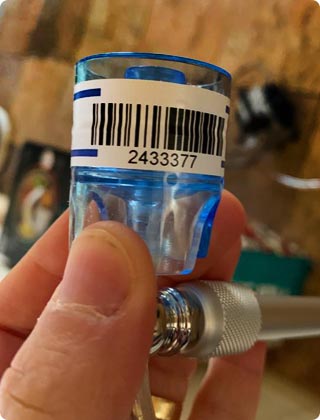MENU


Mold is a big problem for people who own both business and residential properties. If nothing is done, its fast growth could cause health and building problems. Regular mold testing is necessary to keep an indoor setting healthy.
Professional mold testing means that qualified mold specialists look over your property carefully. They use high-tech tools to find and sort mold growth, as well as to pinpoint its location and judge how bad it is. This guide will talk about the steps that are needed for professional mold testing and stress how important it is to catch mold problems early to avoid them.
Mold testing involves taking samples of building parts and analyzing them to find out if mold is present and how bad it is. The goal is to find out where the water is coming from and what kind of mold is in a building.
Businesses and homeowners need to get professional mold testing to get an exact picture of the mold damage. This evaluation lets the right repairs be made, which protects both the land and the people who live or work there.
Mold growth can be harmful to your health, so you need to get a skilled mold test. If you are exposed to mold indoors, you might develop neurological signs, allergies, or breathing problems. To figure out the right steps for cleaning up, you need to have a full picture of the amount and type of mold that is there.
It is very important to be well-prepared for mold tests. Before you set up a mold test, make sure you follow these steps to make sure everything goes smoothly:
To avoid harmful health effects, it is important to handle things correctly and take the right measures. Make sure that everyone knows how important it is to stay away from the testing area and mold particles.
For both business and residential properties, mold testing is an important part of finding and fixing mold problems. There are several ways to test for mold, and each has its own pros and cons. It is important to know about these choices so that you can pick the best one for your needs:
Professional services that test for mold use special tools to make sure they get accurate results. The following types of tools are often used to test for mold:
Professional mold testing follows a set of steps that are meant to be accurate and dependable. The following steps make up the normal mold testing process:
A full check of the property is done before any mold testing starts. This visible inspection includes places where mold can grow, like bathrooms, kitchens, basements, attics, and crawl spaces. It also looks for water damage or signs of water getting in.
Because moisture affects mold growth, high-tech tools like thermal imaging cameras and moisture meters are used to find secret sources of water or moisture.
Mold experts take samples from places where they think mold is growing. Depending on the situation, they may use air samples, surface swabs, or bulk samples. To stop cross-contamination, strict rules are followed.
Samples are sent to a certified lab, where trained technicians analyze them. The lab results give accurate information on the types and amounts of mold, which helps choose the best way to clean up the problem.
The mold testing company gives the client a detailed report that summarizes the lab results and exam results. It might also have suggestions for fixing things or taking more action.
If mold is detected, mold specialists collaborate with the client to develop a tailored remediation strategy. As part of this plan, polluted materials may be saved, contained, and sanitized to make sure all mold is gone.
Once the cleanup is done, there is one last test to make sure that all mold is gone. This step is very important for making sure the property is safe and giving the client peace of mind.
It is very important to understand what mold test findings mean. These data tell us a lot about the presence and amount of mold growth in a building. To make sense of these results, you need to know how many mold particles there are and what kind they are.
The spore count is one of the most important parts of a mold test result. It shows how many mold spores are in the air per cubic meter (or per square inch for surface samples). It's important to know that indoor environments usually have some mold spores in them. As a result, it is normal to see a spore count on a test report.
High numbers of mold spores, along with obvious mold growth or musty smells, can be signs of a serious mold problem that needs to be fixed right away. If you can't see mold or smell it, on the other hand, low spore counts might be common, and you might not need to do anything else.
In situations where higher spore counts are found without any mold growth or smells, more study may be needed to find the source of the higher spore counts, which could mean that mold is hidden.
In addition to the number of particles, mold test results will also list the types of mold that are present. This knowledge is very important because some types of mold can do more damage and may need different ways to be cleaned up. For instance, the presence of Stachybotrys, which is widely known as "black mold," is a major concern because it is very poisonous.
It is important to know that mold test results are not always conclusive and can change based on the testing methods utilized. How to understand common mold test results:
If an expert test finds mold, it is very important to get rid of it right away. Mold removal should only be done by trained professionals to make sure the mold is completely gone and doesn't come back. Mold removal that someone doesn't do with the right training can fail and pose health risks.
Individuals and businesses can both take steps to make it less likely that mold will grow again. Some of these steps could be making the ventilation systems better, lowering the relative humidity, and doing upkeep checks more often.
Here at O2 Mold Testing, we know how important it is to keep the air quality in your home or business clean. Professionals with the latest technology do all of our thorough mold tests. Contact us right away to set up your mold testing, and trust O2 Mold Testing to keep you safe and avoid taking unnecessary risks.